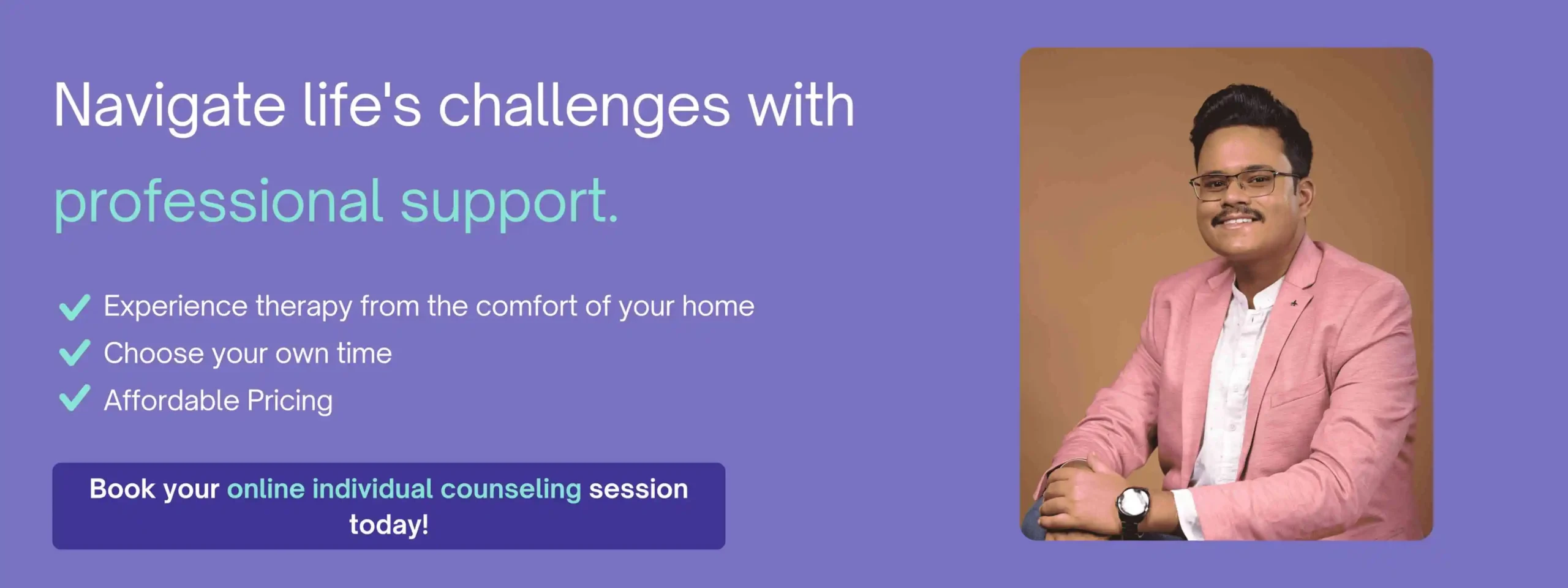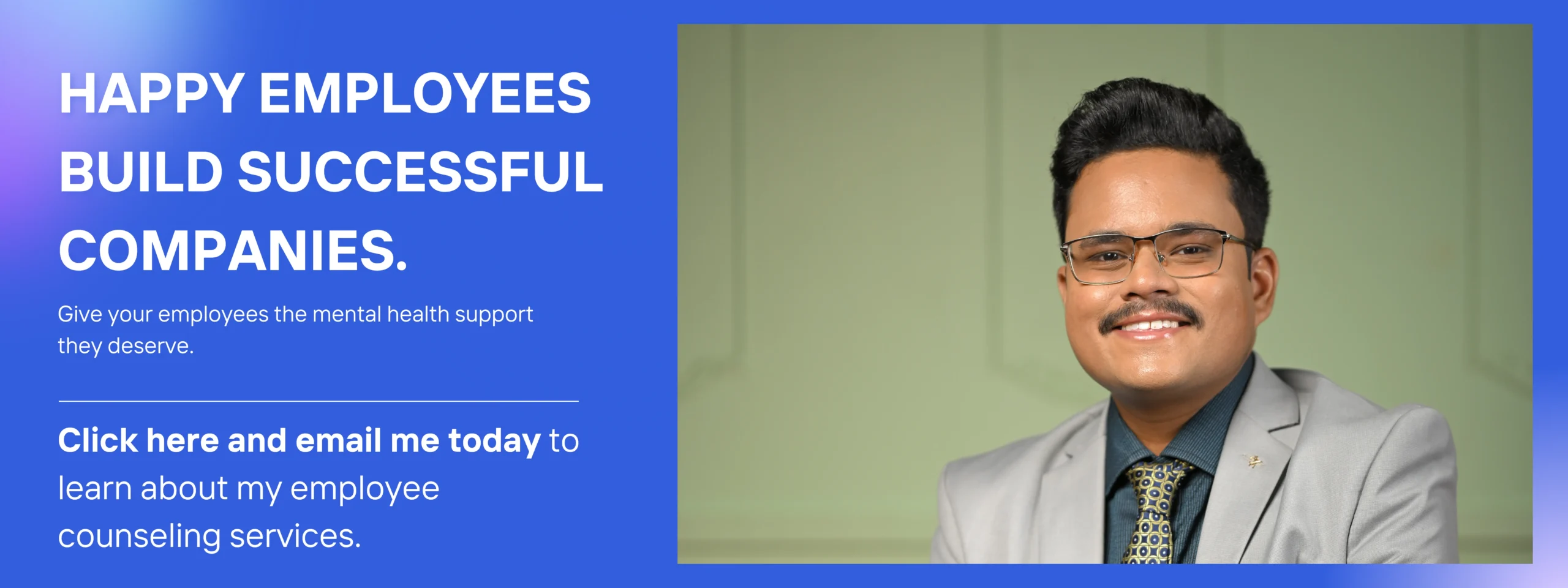In today’s fast-paced corporate environment, workplace stress management has emerged as a critical factor in both individual well-being and organizational success. The modern Indian workplace presents unique challenges – from managing global teams across time zones to navigating traditional hierarchical structures while embracing contemporary work cultures. Through my clinical practice in Mumbai, Bangalore, Pune and Kolkata, I’ve witnessed how these pressures manifest differently in our cultural context, requiring specialized approaches to mental health support.
The landscape of workplace stress in India has evolved significantly over the past decade. Where once the primary concerns centered around workload and job security, today’s professionals grapple with a complex web of stressors including digital overwhelm, work-life integration challenges, and the pressure to constantly upskill. In my counseling room, I regularly meet talented professionals who excel in their technical capabilities yet struggle with the emotional and psychological demands of modern work life.
Every week, I see the impact of unmanaged workplace stress – from a startup founder experiencing panic attacks during investor meetings to a senior manager struggling with insomnia due to constant international calls. These experiences have shown me that workplace stress management isn’t just about individual coping mechanisms; it requires a comprehensive understanding of both organizational dynamics and cultural nuances.
This guide draws from my extensive experience working with both individuals and organizations across India’s diverse corporate sector. Whether you’re an employee seeking better ways to manage work-related stress or an organization looking to create a more supportive environment, you’ll find practical insights and culturally relevant strategies to foster better mental health at work.
Table of Contents
ToggleUnderstanding Workplace Stress in India
Cultural Factors Affecting Workplace Mental Health
In my practice, I’ve noticed how our cultural context significantly influences workplace stress dynamics. The traditional Indian emphasis on respect for hierarchy can sometimes make it challenging for employees to voice their concerns or set boundaries. This often manifests in situations where junior employees feel unable to decline additional work or express their limitations, leading to chronic stress and burnout.
Additionally, the collective nature of our society often leads to increased pressure to maintain family responsibilities alongside career growth. Many of my clients struggle with the expectation to be present for family functions while meeting demanding work deadlines. This dual pressure creates a unique form of stress that requires careful navigation and understanding.
The concept of “log kya kahenge” (what will people say) also plays a significant role in how individuals approach workplace mental health. I’ve observed that many professionals hesitate to seek help or implement boundaries due to concerns about social perception and career impact.
Common Stress Triggers in Indian Workplaces
Recently, I worked with Jasmine (name changed), a 32-year-old IT professional who exemplified many of the common challenges I encounter. She struggled with extended working hours to accommodate international clients, faced pressure from family about her work-life balance, and experienced anxiety about job security in a competitive market. Her situation reflects the complex interplay of professional demands and cultural expectations that many Indian professionals navigate.
The pressure to maintain constant connectivity through WhatsApp groups and emails, even after work hours, has created what I call a “always-on culture” that significantly impacts mental well-being. This is particularly challenging in India context, where saying no to work-related communications can be perceived as lacking commitment.
Recognizing Signs of Workplace Stress
Individual Warning Signs
Through my counseling sessions, I’ve helped clients identify early warning signs of workplace stress. These often manifest as changes in sleep patterns, increased irritability, difficulty concentrating, or physical symptoms like headaches and digestive issues. Understanding these signals is crucial for early intervention and effective stress management.
I encourage my clients to maintain what I call a “stress awareness journal” to track these symptoms and identify patterns. This helps in understanding personal triggers and developing targeted coping strategies. For instance, many professionals notice increased stress symptoms during month-end deadlines or during periods of organizational change.
Team and Organizational Indicators
When organizations approach me for employee mental health support, I help them recognize systemic signs of stress, such as increased conflict among team members, declining productivity, or high turnover rates. These indicators often reflect deeper organizational challenges that need addressing.
In my experience, teams under excessive stress often show decreased collaboration, increased sick leave usage, and a reduction in innovative thinking. These signs can be subtle at first but tend to cascade into larger organizational issues if left unaddressed.
Implementing Effective Workplace Stress Management
Evidence-Based Strategies
Drawing from both research and clinical experience, I guide clients through proven workplace stress management techniques. This includes structured time management approaches, mindfulness practices adapted for office settings, and communication strategies that respect our cultural context while promoting healthy workplace boundaries.
One particularly effective approach I teach is the “mindful boundaries” technique, which helps professionals set limits while maintaining respectful relationships. This involves using culturally appropriate language and timing to communicate needs and limitations effectively.
Creating Supportive Work Environments
In my role as a consultant to several Indian companies, I’ve observed that successful employee mental health support programs require a culturally sensitive approach. This means creating systems that respect privacy (particularly important in our close-knit society) while providing accessible support channels.
I often recommend implementing what I call “wellness circles” – small, confidential groups where employees can share experiences and coping strategies under professional guidance. These groups help normalize conversations about mental health while providing peer support within cultural comfort zones.
Employee Mental Health Support Systems
Building Confidential Support Channels
Privacy concerns often deter Indian professionals from seeking help. I work with organizations to establish confidential support systems that make employees feel safe discussing their mental health challenges without fear of judgment or career impact. This includes creating multiple access points for support, from anonymous helplines to discrete counseling referral systems.
Role of Professional Counseling
Professional counseling plays a vital role in workplace mental health. In my practice, I offer both individual sessions (₹1,500 per session) and couple counseling (₹2,000 per session) to address work-related stress and its impact on personal life. These sessions provide a safe space to explore challenges and develop personalized coping strategies.
Through counseling, we work on developing what I call a “stress resilience toolkit” – a personalized set of strategies and resources that individuals can draw upon during challenging times. This might include meditation techniques, communication scripts, boundary-setting practices, and stress-relief exercises tailored to their specific situation.
Taking Action: Next Steps for Organizations and Individuals
Practical Implementation Steps
Based on my experience, successful workplace stress management requires a systematic approach. Organizations should start with anonymous stress audits, followed by implementing structured support systems. For individuals, the journey often begins with acknowledging the need for support and taking small, consistent steps toward better mental health.
I recommend starting with what I call the “1% improvement approach” – making tiny but consistent changes in daily routines and work habits. This might begin with something as simple as taking regular breaks or setting specific times to check emails.
Seeking Professional Help
If you’re experiencing workplace stress, remember that seeking help is a sign of strength, not weakness. As a counseling psychologist, I provide a confidential, non-judgmental space to work through your challenges and develop effective coping strategies.
In our sessions, we can explore how cultural expectations intersect with workplace demands and develop strategies that honor both your professional growth and personal well-being. Whether you’re dealing with burnout, anxiety about performance, or challenges in maintaining work-life balance, professional support can help you navigate these challenges effectively.
To begin your journey toward better workplace mental health, you can schedule a consultation to discuss your specific situation and develop a personalized approach to managing workplace stress.
Frequently Asked Questions
Q: What are the most effective workplace stress management techniques for Indian professionals?
A: Based on my clinical experience, a combination of boundary-setting, time management, and mindfulness practices works best for Indian professionals. I guide clients through culturally appropriate techniques that consider both workplace demands and family expectations.
Q: How can I maintain work-life balance while managing workplace stress?
A: In my counseling practice, I help clients develop personalized strategies that respect both professional and personal commitments. This includes setting realistic boundaries, effective communication with family and colleagues, and creating sustainable daily routines.
Q: What role does employee mental health support play in reducing workplace stress?
A: Professional mental health support can significantly reduce workplace stress by providing tools, strategies, and a safe space to process challenges. In my experience, organizations that prioritize mental health support see improved employee well-being and productivity.
Q: When should I seek professional help for workplace stress?
A: Consider seeking professional support if you notice persistent changes in your mood, sleep, or work performance. Early intervention can prevent more serious mental health challenges and help you develop effective coping strategies.








1 thought on “A Psychologist’s Guide to Workplace Stress Management: Supporting Mental Health at Work”
Some genuinely excellent blog posts on this web site, thankyou for contribution.